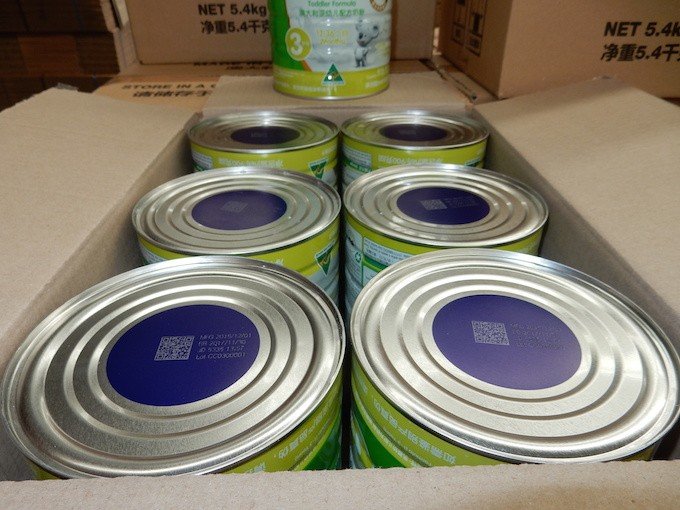
New Zealand exported $6.19 billion of beef and lamb during the year ending September 2015 and $12 billion of milk powder, butter and cheese in the year ending June 2015, according to Statistics New Zealand. While these products are a vital part of New Zealand’s economy, they are also some of the most counterfeited foods in the world according to Trust Code’s CEO Paul Ryan.
To put the extent of this risk into perspective, Ryan says wine and oil are counterfeited so much that the Italian Mafia make more money off those fakes than they do from drugs.
With counterfeits posing a real threat to a brand’s reputation, Ryan says Kiwi and Australian manufacturers are using the codes to share information with international customers including the product’s make and supply chain.
“The brand is able to show, particularly to the Chinese consumer, that they can trust in the security of the product, so the product is genuine, and it has been made in Australia or New Zealand,” says Ryan.
While he cannot name New Zealand exporters using the code technology, Australian infant formula producer Camperdown have been public about putting codes on its tins as a way of reassuring their Chinese customers that the product they are giving their child is real.
“It’s why we are called a ‘Trust’ Code,” says Ryan. “We are trying to create this trust view, if I’m buying a Camperdown product then I can trust this brand because they are taking steps to protect me.”
Even if suppliers of the fake products go to the effort to make their own fake code, Ryan says their IP address will be exposed, giving the Chinese government the upper hand in their hunt for counterfeiters.
“If you want to make up a product and fake trust codes barcode and go to all the effort to do that, you’ve still got to host that solution somewhere and you will get caught.”
Being able to inform customers of a product’s history not only helps to combat the counterfeit product market, it is also useful in situations when food products are recalled.
When Fonterra pulled its exported milk-products off the shelf in 2013, after it emerged they were potentially contaminated with botulism, it was criticised for being unable to identify where in the world the products in question were located and for having no-well prepared group crisis plan to implement. Ryan says had Trust Codes been in use the dairy giant would have been able to engage with consumers and say, “‘this product is safe’ or, ‘this product is not safe’”.
Because Trust Codes are serialised and can be updated at anytime with information from the manufacturer, the brand in question can take control of the situation in a very targeted way.
“If there is a recall on that batch for example and we know that serial number is part of a batch we are able to say to our customer ‘return it to the store’ or at least ‘don’t use it’,” Ryan says.
To some degree, Ryan’s application of QR codes is a return to what they were originally developed to do. While they have become somewhat maligned in recent years for being unused tech trinkets slapped onto campaigns, they originated in Japan to serve the utilitarian purpose of tracking automotive parts during the car manufacturing process.
Closer to home, Trust Codes have yet to grace the shelves of New Zealand supermarkets, but Ryan says there is a place for the technology in the domestic market, just as much as there is in the international market.
Last year, the Ministry for Primary Industries listed 23 products being recalled from the shelves of New Zealand supermarkets and Ryan thinks the threats made last year to contaminate infant formula with 1080 should “drive greater acceptance” for brands looking to use the codes here.
During a food safety scare Ryan says people tend to “play safe” and will avoid the entire industry or country, providing an opportunity for brands using codes to engage customers and regain their trust.
“If another company recalls we can target consumers and say we are not that brand, so it works both ways.”
Trust Codes is in discussion over domestic products now, and Ryan says implementation is likely in “due course”.




